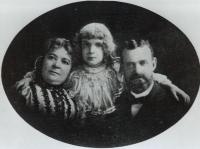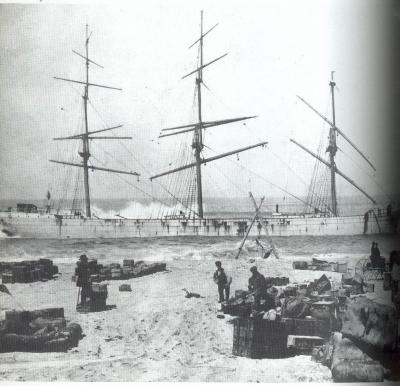On Sunday, March 13, 1898, the iron ship T.F. Oakes–a vessel so tainted with bad luck that it was renamed the “New York” to ward off evil spiritsâfulfilled its destiny, losing its way– surrendering to the pull of the waves rushing it toward the beach at Half Moon Bay, the ship’s final resting place.
During the “New Yorkâs” last hours at sea, the local townspeople gathered on the beach, some of them carrying whiskey, watching the silhouette of the ship struggle to live, to get back on course– ultimately a hopeless challenge.
Knowing the outcome, the people of Half Moon Bay built a huge bonfire, and brought food and warm clothes for the survivors who came ashore with the help of the locals forming a “human chain” from shore- to- ship. (The Chinese cook injured his leg and the first mate, already ill with a cold, later died at a San Francisco hospital).
On its maiden voyage as the “New York” the ship was sailing from Shanghai and Hong Kong to San Francisco, its cargo an exotic mix of carved dark furniture and cloisonnéâtea and firecrackers.
On board was kindly Captain Thomas Peabody, his sweet wife, Claire, and precocious daughter, Clara, who, in 1950, penned âSinging Sailsâ?, the memory of her adventures aboard the doomed vessel–a book you can find in the archives of the San Mateo County History Museum at Redwood City. Just as the name of the ship had been changed from the T.F. Oakes to the New York, the new owners sought to cover all the angles by carefully choosing a benevolent captain. The Peabodys projected the image of a fairy tale family, surely able to thwart any lingering evil spirits.
Souvenirs from the shipwreck of the New York were proudly displayed in Half Moon Bay homes, a memory of one of the Coastside’s most exciing events.


